Preventing Your Not-So-Spring Chicken from Getting Sprung
By Rodger Barr DVM
Fall 2000
Many of our beloved adopted greyhounds are now approaching their twilight years. These years can be the very best if several simple precautions are taken. First and foremost, try to avoid the pitfall of going on automatic pilot with your reliable, very dependable and always perfect pet.
Over the years, you have worked out your greyhound’s kinks and unacceptable behaviors (as if!). Your special companions can become so predictably perfect that you might tend to let your guard down and fail to see some of the early signs of age-related problems.
Always take note of any behavior changes, no matter how slight they appear. The simplest things can be significant, and if these problems are dealt with early, it may be helpful in cutting off a potential problem at the pass. Such things as more frequent bowel movements, changes in eating habits, an increase in water consumption, a change in your pet’s normal energy level, an abrupt alteration in your pet’s normal silhouette, increased urination frequency, attitude changes towards family members or other pets, unusual odors, sleeping more (would you notice?), any new lumps or bumps, new lameness, unwillingness to go up or down stairs — absolutely anything different may be an early sign of a developing problem. If these problems are addressed and dealt with early, the likelihood of resolution is much greater.
Exercise is something most retired greyhounds appear to really enjoy. This can range from regular walks to hard running. You would think that our revered pets would know what type of physical activity is best for them. Well, I’m here to tell you, they are dogs, the equivalent of young children or worse, THEY DO NOT KNOW WHAT’S BEST FOR THEM. We love the breed for many reasons, and for some of us, their athletic prowess is part of their magic, and we cannot imagine discouraging them from their magnificent oval and figure eight racing in our backyard ruts. That gorgeous double suspension style of running is fascinating to watch – when they’re YOUNG and FIT. When age begins to creep up on a greyhound — and sometimes you are the last to realize this — heavy exercise can be the catalyst to disaster. I expect this opinion will be as popular as an increase in the federal income tax rate, but over the years I have seen enough to convince me that CONTROLLED activity is one of the most important adjustments we can make to lengthen the number of quality years we have with our beloved hounds. When we ourselves approach middle age, we voluntarily adjust our activity level or pay the price. The same is true for our greyhounds. Walking instead of running, although less exciting to watch, is just as valuable in maintaining good physical condition for our retired athletes. You rarely see dislocated toes, broken toenails, split webs, broken backs, ruptured discs, injured limbs, or even lacerations caused by a vigorous walk. I can’t say the same for running.
Anything in moderation works for some, but less so with an animal capable of running 48 mph. The bottom line is that most of our dogs just don’t have the physical condition necessary to allow a body to hold up during this kind of physical exertion. Our dogs rely on us to make proper choices for them. They expect us to keep them out of the street, they expect us to feed and water them properly, and as their protectors, we need to control their physical activity. Many will say, “How do I stop my greyhound from running like crazy in the backyard?” I never said it was easy; I said it is critical to prolonging quality life. If you have more than one and they tend to get each other going, you might consider turning them out separately. It may even be necessary for you to go out with them to insure compliance. Lastly, simply resorting to walking on a leash instead of the backyard may be the best option of all.
This is the first installment in a series on health issues and the mature greyhound. In the next issue, I will address dietary adjustments, vitamins, tips on adjusting the level of exercise, as well as suggestions on stretching and massage. Lastly, I will suggest different blood tests and other diagnostics that are useful in catching problems before they can develop a foothold.
So hug your mature pet and appreciate every day, and don’t take life for granted. There are many things we cannot control, so we must strive to manage those things that we can. I can confidently say that you will be pleased with the results.
